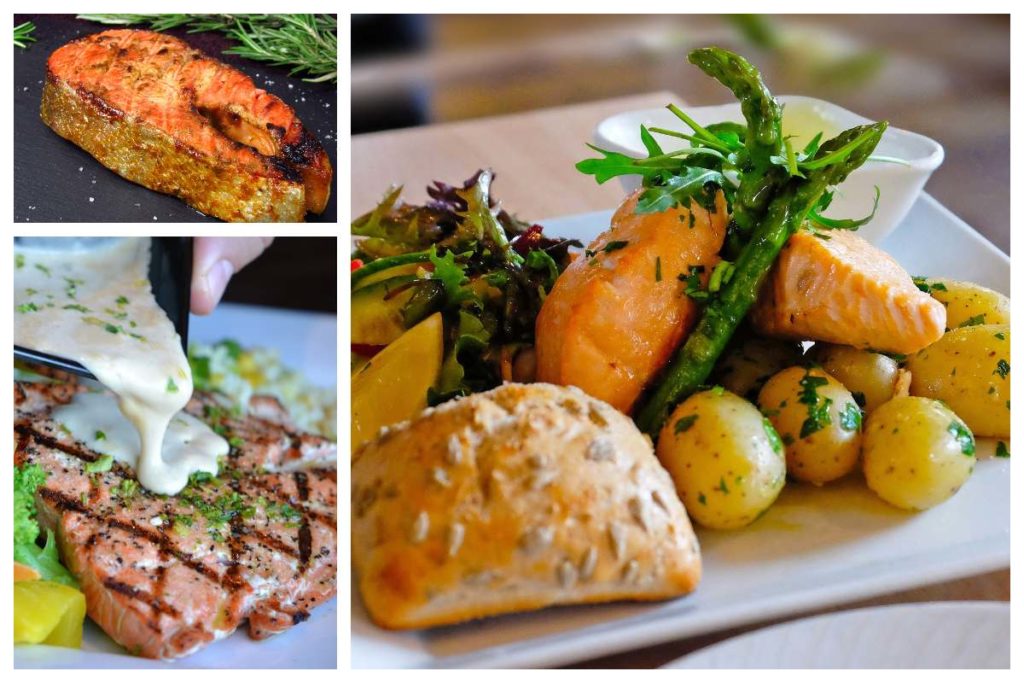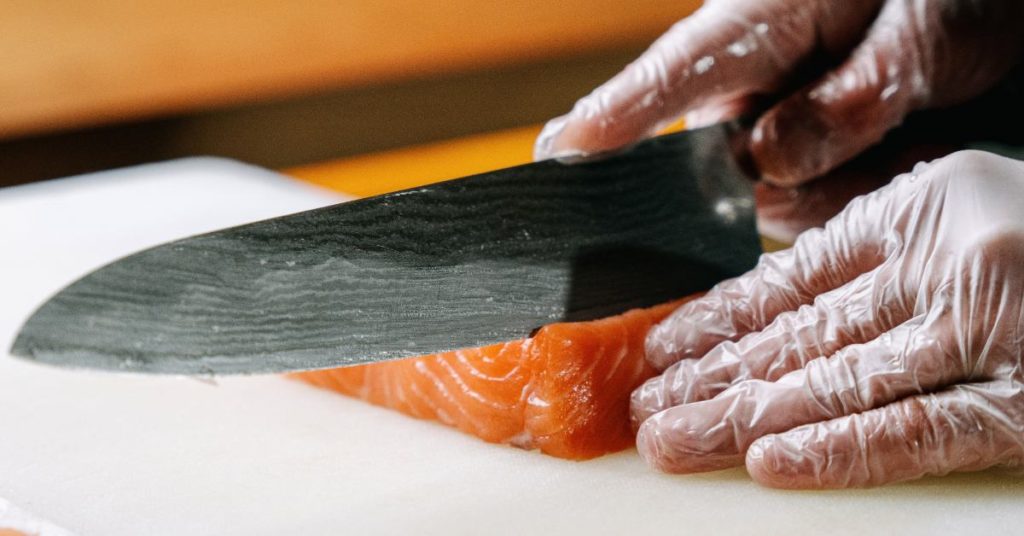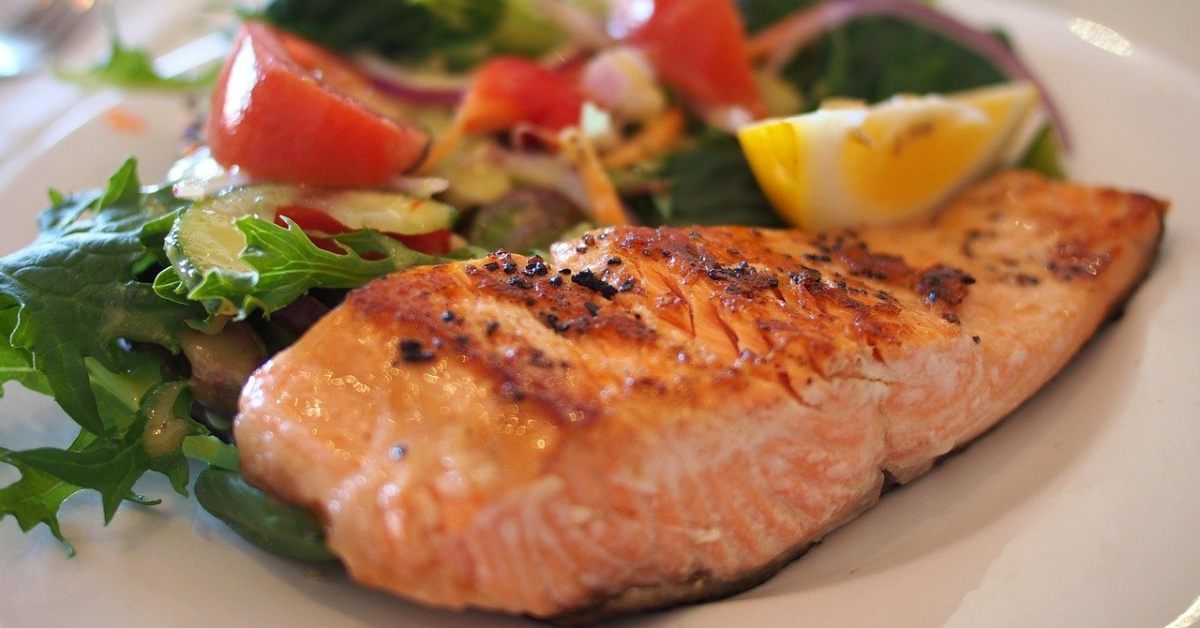Salmon is a nutritious choice to have with lunch or dinner. It provides you with plenty of protein and healthy fats in your meal. Salmon is incredibly versatile, and it can be served in various ways.
There are many ways to cook salmon, from pan-frying to barbecuing salmon on an outdoor grill, but baking is a fairly hands-off way to cook fish. Baking salmon takes as little as 15 minutes, making it an excellent option for those busy evenings!
Here’s a comprehensive guide on how to bake salmon fish in the oven.
Ingredients You Will Need for Baked Salmon
- Salmon: One 4-6 ounce filet per person
- Olive oil: You can also use melted butter if you prefer
- Seasoning: Salt, pepper, and your choice of spices
- Lemon juice: This is optional but adds a nice flavor
To bake salmon, start by preheating your oven to 400F. You can also use a toaster oven for baking your salmon at the same temperature. While the oven is preheating, take the salmon out of the fridge, so it isn’t cold when it goes into the oven.
Line a baking sheet with foil or parchment paper and place the salmon filets skin-side down. Leave about an inch of space between filets to ensure even cooking.
Using your hands or a basting brush, spread olive oil over the top of the fish. You don’t need much, just enough to moisten it so that the salmon doesn’t dry out when baking.
Next, sprinkle with salt and pepper and any other spices you desire. Dill goes very well with salmon, as do garlic and parsley. If you like, you can squeeze some lemon juice over the top as well.
Place the baking sheet in the middle of the oven and cook for 15 minutes.
Temperature For Cooking Salmon
We recommend baking salmon at 400F to have nice, tender fish. While you can cook salmon faster at a higher temperature, the fish will dry out. A salmon filet that is one inch thick will take about 15 minutes to cook at this temperature.
How To Tell When Salmon Is Done
Salmon is finished cooking when it is pink, opaque, and easily flakes with a fork. It changes from a translucent color to a solid pink with white parts as the fish cooks.
You can also use a thermometer to ensure the fish is done. The internal temperature of the salmon should be 145F when finished.
You want to make sure that your salmon is not undercooked. Eating salmon that has not been thoroughly cooked can cause foodborne illness. Salmon used in raw sushi is a different grade of fish and is not the same as the salmon filets that you cook.

What to Serve with Salmon
Salmon has a relatively mild flavor and goes well with many different foods. Traditional starches like potatoes, rice, and pasta are excellent options. Add a steamed vegetable like asparagus or green beans, and you’ve got a delicious dinner.
You can also add cooked salmon to a green salad to make it a hearty lunch option. This recipe is a great way to use up leftover salmon as it is not necessary to heat it before adding it to the salad.
Cooking Fresh vs. Frozen Salmon
You can purchase your salmon, either fresh or frozen. Frozen salmon requires a slightly longer cooking time.
If you are baking salmon from frozen, you’ll need to add about five minutes to your cooking time. A piece of frozen salmon that is one inch thick will take about 20 minutes at 400F.
Alternatively, you can thaw the salmon in the fridge before cooking and then bake it for 15 minutes. Do not thaw the salmon on the counter at room temperature. Bacteria will start to grow at this temperature and can cause you to become ill.
Storing Salmon After Cooking
Salmon tastes the best right out of the oven. However, if you have leftovers, you can easily store these and enjoy them another day.
You can store cooked salmon in the refrigerator for 3-4 days. Just place it in a sealed container or on a plate wrapped with foil or plastic.
You can also freeze cooked salmon for later use. While you can store salmon in the freezer for up to six months, it will taste best if you use it within 6-8 weeks.
Cooking Salmon After Storing
If your cooked salmon has been stored in the fridge, you can reheat it in the oven. To heat the salmon in the oven, place it on a foil- or parchment-lined baking sheet. Brush with a bit of oil or lemon to add some moisture. Cover loosely with foil to prevent the salmon from drying out. Place in a 275F oven for approximately 15 minutes.
While you can reheat your salmon in the microwave, we don’t recommend this method. The high heat tends to dry out the fish quickly, and your microwave is likely to retain the fishy odor for a while after using it!
To reheat cooked salmon that has been stored in the freezer, simply follow the same steps as above and add an extra 5 minutes to the baking time.

Choosing the Best Salmon
You’ll see lots of options at the grocery store when buying salmon. There’s fresh and frozen, wild and farmed, sockeye and chinook. All are high in omega-3 fatty acid. Here’s what all of these labels mean and what you should choose.
If you have access to fresh salmon caught recently, this is the best-tasting option. However, if you don’t live near the ocean, that “fresh” salmon probably isn’t so fresh after all. Frozen salmon is put in a freezer right after it is caught and processed to retain flavor and nutrients.
Wild salmon means that fishers caught the fish in its natural environment. This type of salmon tends to be lower in fat and higher in minerals like iron and calcium. Farmed salmon is raised in an artificial environment and does not have the same diet as wild salmon. Farmed fish is higher in fat and has less nutritional value.
Always choose the healthiest salmon when learning how to bake salmon fish in the oven.

